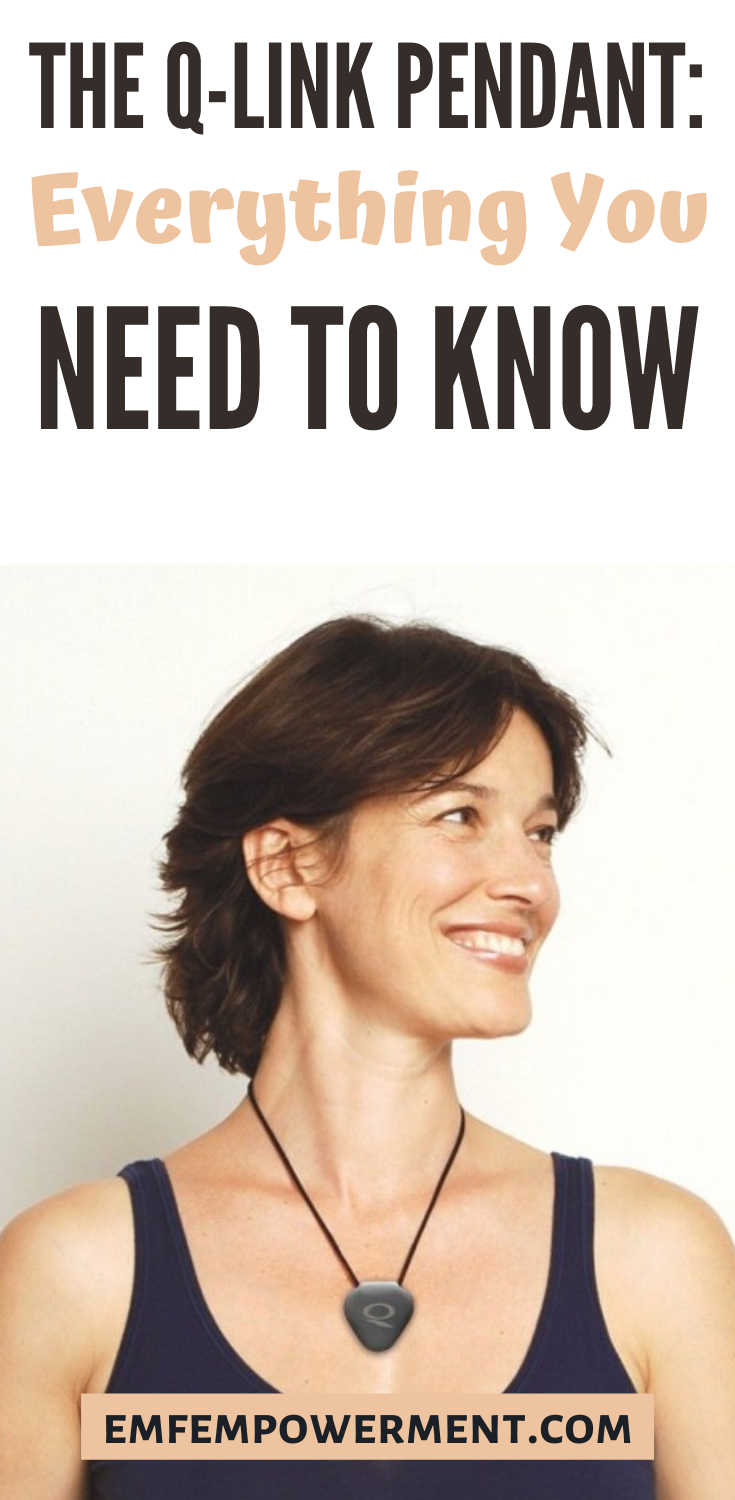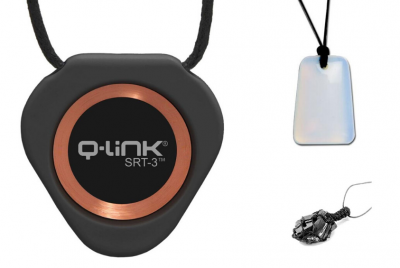When worn correctly, both Bluetooth and wired earbuds offer a lightweight and comfortable way to listen…
Q-Link Pendant: What You Need to Know
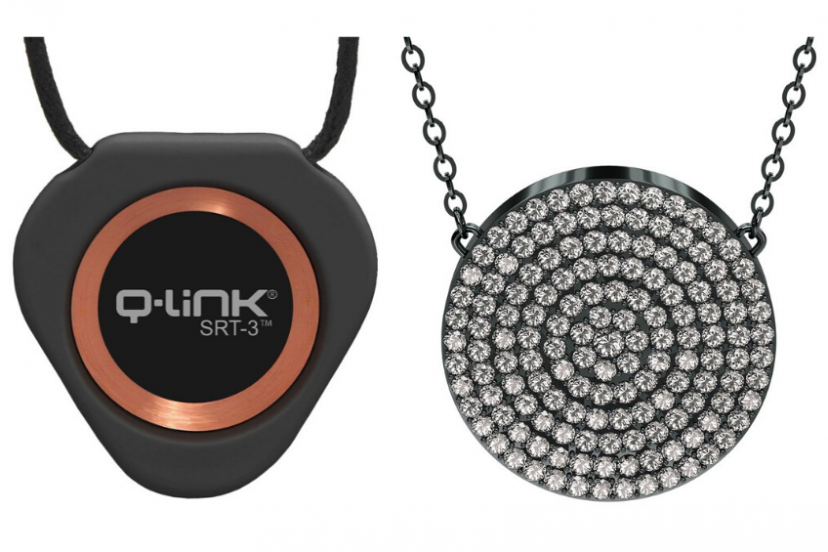
*We may earn a commission for purchases made using our links. Please see our disclosure to learn more.
Few EMF protection products have achieved the status of the Q-Link pendant. Q-Link products have been around for over 25 years, and they’ve gained something of a cult following along the way. The pendant is said to have all sorts of benefits, from EMF protection to improving mental focus. It’s even said to have an effect at the physiological level, aiding in blood oxygenation. Wearers of the pendant have reported increased athletic endurance, emotional stability, and improved energy levels.
Anytime a product makes those kinds of claims, it’s natural to wonder if there’s any truth to it. And that’s exactly what we’re going to dive into here — what the Q-Link pendant is, how it works, and what the research says. We’ll also look at some of the anecdotal evidence and product reviews, and go over the different models of pendant available.
If you’re at all curious about this much-loved pendant, you’ve come to the right place.
What is the Q-Link pendant?
The Q-link pendant is a device that is worn on a necklace. The necklace’s cord runs 36 inches, and it’s fully adjustable, although you may need to trim the extra cord after fitting it to your neck. The pendant can be worn facing in either direction, over or under clothing. There are no magnets used in the Q-Link pendant, but the manufacturer still recommends that pregnant women or those with health issues consult their doctor before wearing the necklace.
The pendant itself consists of an outer shell that can be made from a variety of materials. The shell features an embedded copper ring and a crystalline core.
Benefits of the Q-Link pendant
Q-Link maintains that there are many benefits of wearing their pendant. It’s said to protect against EMF radiation and is favored by many who work around electronics all day. It’s also alleged to improve athletic performance, having received an endorsement from the Professional Golf Association (PGA). The pendant may help sharpen mental focus and clarity, decrease the negative effects of stress, and even increase the effectiveness of acupuncture treatment.
How it works
Q-Link’s pendant relies on the philosophy that every living being resonates at a given frequency. This frequency can be unique to the individual, and we tend to feel the best around frequencies that are similar to us. This may explain why we sometimes meet someone and instantly click — they may resonate at a similar frequency. Spending time around like-frequencies is said to be a therapeutic experience. Nature’s frequencies, for example, tend to be similar to our own, and that is one reason why time spent in nature can be so healing.
The Q-Link pendant contains something called Sympathetic Resonance Technology (SRT) that allows it to resonate at a frequency similar to the wearer. The copper, crystal, and other materials contained in the necklace are said to mimic natural frequencies, protecting the wearer and providing a host of benefits. The more you wear the necklace, the more pronounced the benefits are said to be, as it resonates more at your frequency.
So does it work? Let’s take a look at what the evidence says.
Scientific evidence
One study of the Q-Link pendant by the Holos Institute for Research in Subtle Energies and Energy Medicine yielded promising results. It separated participants into two groups, one receiving the actual Q-Link pendant and one receiving a placebo pendant. Each group was then exposed to significant amounts of EMF radiation, while the participants’ brain waves were measured by an EEG machine.
There was a distinct difference between the group wearing the real pendant and the placebo. The EEG waves of those wearing the pendant were less affected by the EMF exposure than those wearing the placebo. That indicates the Q-Link pendant does provide some degree of protection against EMF radiation.
Q-Link’s website does list numerous other studies related to the Q-Link pendant, although only a few studies provide a link to the source — mostly the site provides a paragraph or so summary of the study and its findings. The research listed there is overall quite promising, with results indicating the Q-Link is capable of improving mental focus and endurance, as well as reducing the negative impact of stress. Without being able to evaluate the studies themselves, however, these results must be taken with a grain of salt. It’s also worth noting that it’s not clear whether or not these studies were independently funded.
Endorsements and reviews
That’s the scientific evidence for the Q-Link . What do the actual purchasers of the necklace say?
The bulk of the necklace’s reviews were positive. Several reviewers mentioned that they were repeat customers, with a few having purchased the pendant from the beginning. That kind of customer loyalty makes a compelling case for the Q-Link’s efficacy. Quite a few also mentioned that they felt a marked difference while wearing the pendant, particularly those suffering from Electromagnetic Hypersensitivity (EHS). Some even said that they felt immediate relief of symptoms after putting the necklace on.
The majority of reviewers who purchased the pendant were happy with their purchase. Still, there were also some who did not notice a difference when wearing the necklace. A few also commented that it may even make symptoms of EHS worse.
Given the varying experiences of wearers of the pendant, only you can really decide if this product is right for you. If you suffer from EHS, it may be worth trying just to see if you experience relief from your symptoms.
Q-Link SRT-3 Pendant
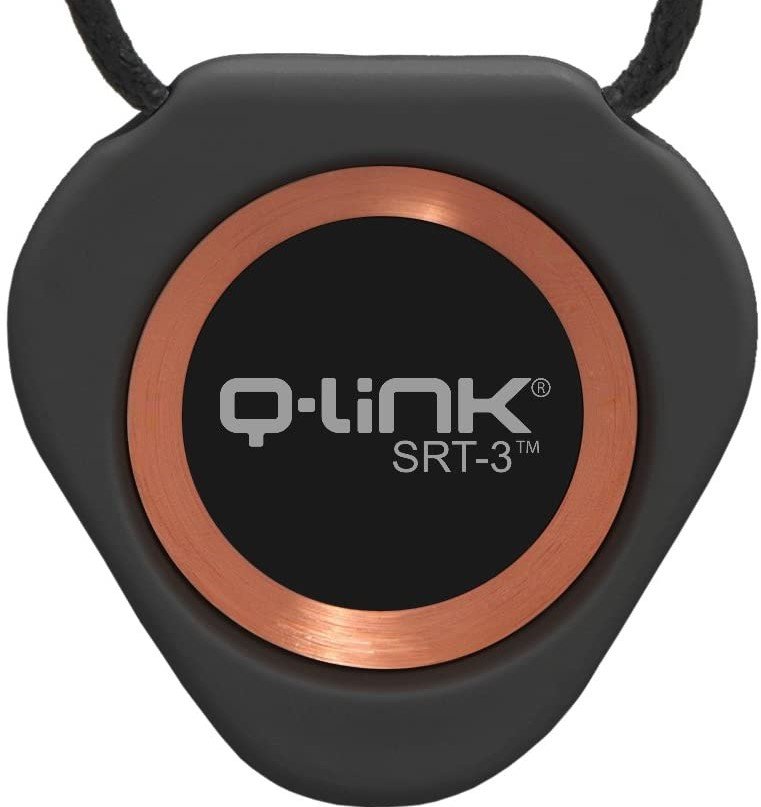
There are several styles of Q-Link SRT-3 Pendant out there. They are all, however, basically the same. The primary difference between the models has to do with the pendant’s outer shell. The acrylic versions are sort of the entry-level model, but they do come in a wide variety of colors and designs. The acrylic models come in opaque, transparent, and glossy finishes. Q-Link also sells models made from stainless steel, gold, and silver, in addition to their jewelry-designer inspired “Brilliant” line.
Testing your Q-Link
The best way to test your Q-Link is really to go by feel when you’re wearing it. Do you feel relief from the symptoms of EHS? Do you notice other benefits? If so, then the Q-Link is working for you and it was worth the investment. It doesn’t really absorb or deflect EMF radiation as much as it changes how your body reacts to it, so it likely won’t yield measurable results with an EMF meter.
If you don’t notice any changes, it’s worth noting that the company offers a risk-free guarantee with many of its products. You have either 90 or 30 days, depending on the type of pendant, to decide it’s not right for you and send it back for a full refund.
Other Q-Link products
If you’re intrigued by Q-Link technology but aren’t sold on the idea of wearing a pendant necklace, the manufacturer makes several other devices using SRT.
Q-Link Clear
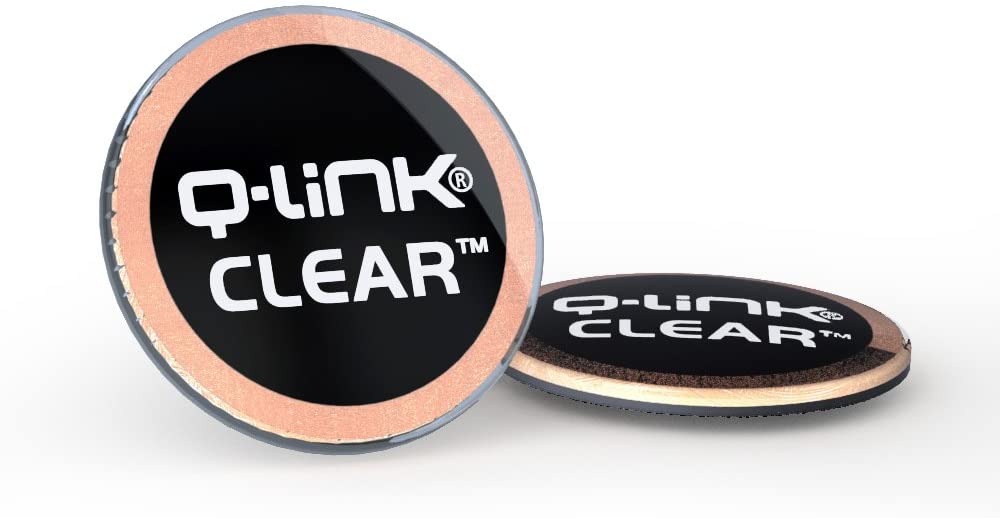
Q-Link’s Clear is made for cell phones and other devices. Intended to serve as a complement to a pendant or bracelet. Simply stick the Clear device on the back of your cell phone, or grip it in your hand while the phone is in use. The casing is made from injection-molded plastic, so it’s fairly durable, which is a huge perk if you’re affixing it to your cell phone.
Q-Link Nimbus
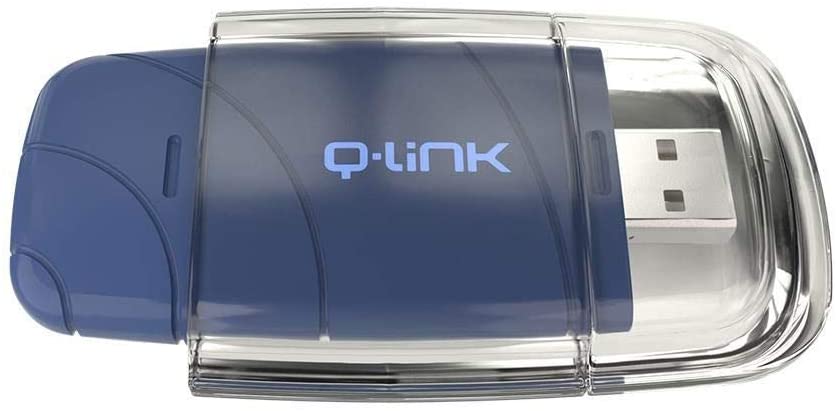
The USB-powered Q-Link Nimbus is designed to be plugged into any USB port. It uses the USB’s power to create a 30-foot field of SRT going out in all directions. The Nimbus is ideal for anyone who works around computers, or who is in close physical proximity to other gadgets throughout the day. You could even find a power strip with a USB input and plug the Nimbus into that, to provide protection for a small room without a USB port.
Q-Link Stratus
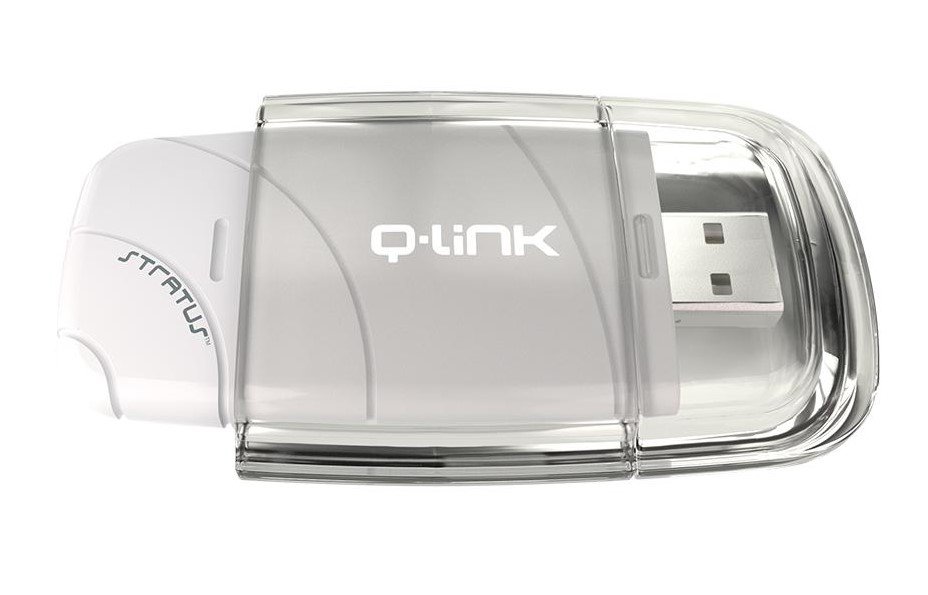
The Stratus is similar to the Nimbus in both design and functionality. It’s intended to be plugged into a USB port, although this device creates a stronger omnidirectional field than the Nimbus — 45 feet for the Stratus, which is 15 feet further than the Nimbus. The Stratus further differentiates itself from the Nimbus with fiber laser markings.
Q-Link Oasys
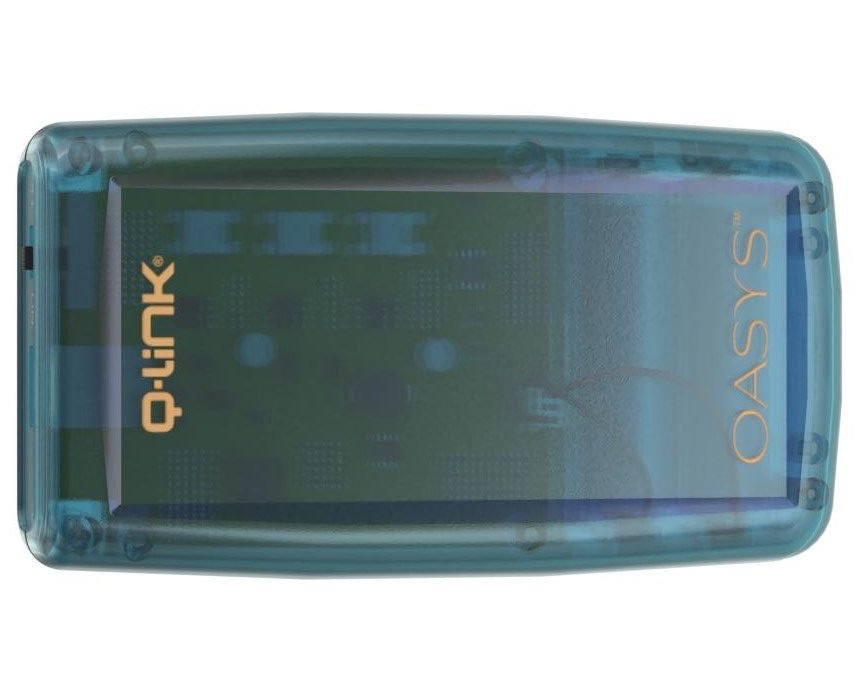
Q-Link’s Oasys is a portable SRT-field generator. This device can produce a field up to 70 feet in diameter, making it the most powerful product Q-Link offers. Made with a high-capacity battery capable of lasting 72 hours with a full charge or six to eight hours with a one hour charge, the Oasys has an impressive lifespan and is perfect for protection on the go.
Final thoughts
Q-Link has been around for over 25 years. It’s a respected company that has brought a tremendous amount of relief to a lot of people, especially sufferers of EHS. The available scientific literature, reviews, and testimonials can’t be easily discounted. This pendant has the potential to offer significant relief to its wearers. At the same time, much more independent and well-documented scientific research into the effectiveness of the Q-Link is still needed.
